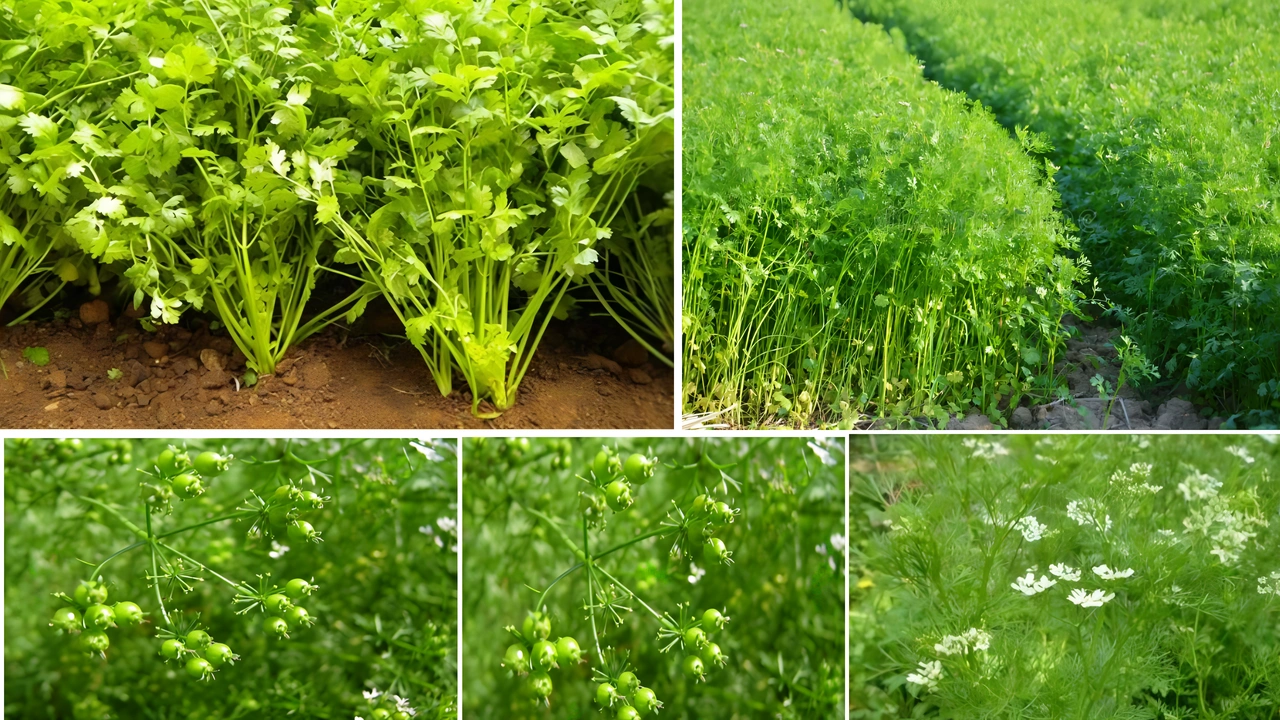Join on WhatsApp
Get the latest updates directly on WhatsApp – motivation, news & more!
Growing your own coriander and spinach at home can be a rewarding experience, providing fresh, healthy ingredients for your meals and adding greenery to your space. Both of these plants are easy to grow and don’t require much maintenance, making them perfect for beginners or those with limited gardening space. With the right environment, proper care, and a few helpful tips, you can enjoy a continuous harvest of these nutrient-packed herbs and leafy greens right in your own home. Whether you have a small balcony, windowsill, or backyard, cultivating coriander and spinach is an accessible and fun way to enhance your gardening skills and bring fresh flavors to your kitchen.
Choosing the Right Location for Growing Coriander and Spinach
Both coriander and spinach thrive in cool, well-lit environments. If you’re growing them indoors, a sunny windowsill or balcony that receives at least 4-6 hours of indirect sunlight a day will work well. Outdoors, both plants prefer partial to full sun. Ensure that the soil is well-draining to avoid waterlogging, which can lead to root rot.
Best Soil for Coriander and Spinach
Coriander and spinach both prefer slightly acidic to neutral soil. For optimal growth, aim for a pH level between 6.0 and 7.0. Loamy soil with good drainage is ideal, as it allows the roots to breathe. You can amend the soil with organic compost to improve nutrient content and ensure healthy plant development.
How to Plant Coriander and Spinach from Seeds
Start by sowing seeds directly into the soil about ½ inch deep. Coriander seeds should be spaced 2-3 inches apart, while spinach can be sown about 1 inch apart. If you are planting indoors, use a shallow container with drainage holes. Water gently after planting, keeping the soil moist, but not soggy.
Watering Tips for Growing Coriander and Spinach
Both plants need regular watering, but they do not like to sit in water. Ensure that the soil is consistently moist, especially in the warmer months. However, avoid overwatering, which can cause fungal diseases. A good rule of thumb is to water when the top inch of soil feels dry. Using a watering can with a fine nozzle helps prevent disturbing the soil.
How to Maintain Healthy Growth of Coriander and Spinach
Regular trimming of coriander will prevent the plant from flowering too early, which can cause it to become bitter. Spinach also benefits from regular harvesting, which encourages new growth. Make sure to remove any yellow or damaged leaves to ensure the plants stay healthy. These plants typically need no additional fertilizer if your soil is already rich in organic matter.
Dealing with Common Pests and Diseases
Coriander and spinach are prone to a few pests, including aphids and spider mites. To keep them at bay, consider using natural insect repellents like neem oil or introducing beneficial insects like ladybugs to your garden. Both plants can also be susceptible to mildew, so be mindful of overcrowding and ensure proper air circulation.
Harvesting Coriander and Spinach
Coriander can be harvested once it has reached about 4-6 inches in height. Simply snip off the outer leaves, allowing the inner leaves to continue growing. Spinach can be harvested by picking the outer leaves first when they reach 3-4 inches long. This encourages more leaves to grow from the center. Regular harvesting will help both plants continue to produce throughout the growing season.
How to Extend the Harvest Season
For a continuous harvest, consider planting coriander and spinach in stages, every 2-3 weeks. This ensures that as one batch is being harvested, another is ready to be picked. If you’re growing them indoors, you can extend the season by placing your plants in a location with a consistent temperature between 60°F and 75°F (15°C and 24°C), which is ideal for their growth.
Final Thoughts
Growing coriander and spinach at home is an easy and satisfying way to add fresh greens to your diet, and it doesn’t require much space or expertise. By following these simple tips and paying attention to their needs for light, water, and soil, you’ll soon enjoy a thriving herb and veggie garden right in your own home. Not only will you be able to harvest fresh, flavorful produce, but you’ll also take part in a sustainable gardening practice that can help reduce your carbon footprint.
Gardening offers a sense of accomplishment, and with coriander and spinach, you’ll be rewarded with nutritious ingredients that elevate your cooking. Whether you’re a seasoned gardener or a first-time grower, these plants are a great starting point for anyone looking to grow their own food at home.


